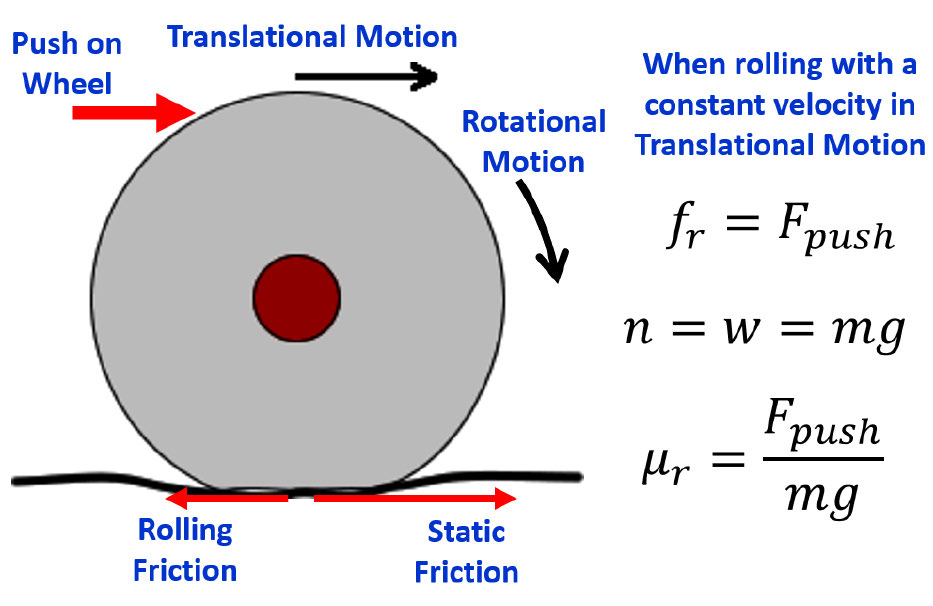Q: Rolling friction vs Static friction.
This question is about a topic covered in the first half of this course. To my understanding, static friction is a friction force on an object that is not moving, and rolling friction is the friction of a circular object over a surface. However, when I think about the rolling friction, It seems the same as static friction as any one point on the “wheel” makes contact with only one point on the surface that it is rolling over, similar to static friction. I notice online there are things such as rolling resistance coefficient but I don’t understand why it differs from static friction.

A: This is a good question. To understand Rolling friction, we should know first that Rolling motion is a combination of Rotation about the center and Translational (Linear) motion of the center. Refer to the simulation: https://ophysics.com/r1.html
We can interpret Rolling friction as Kinetic friction in the Translational motion of the center in Rolling. The main causes of rolling friction are the deformation of the wheel or the surface and the slippage between the wheel and the surface (see the picture).
Static friction is essential and helpful in Rolling motion. It is opposite to the Rotational motion component, but parallel to the Translational motion component. The point on the wheel having contact with the surface won’t move instantaneously because of Static friction, while the center of wheel moves instead and then the contact point rotates. Again, refer to the simulation.
I also made a Blog about this topic earlier. The link is here FYI: https://www.physicsdoable.com/posts/2020-11-02-highlights-of-questionanswer/
